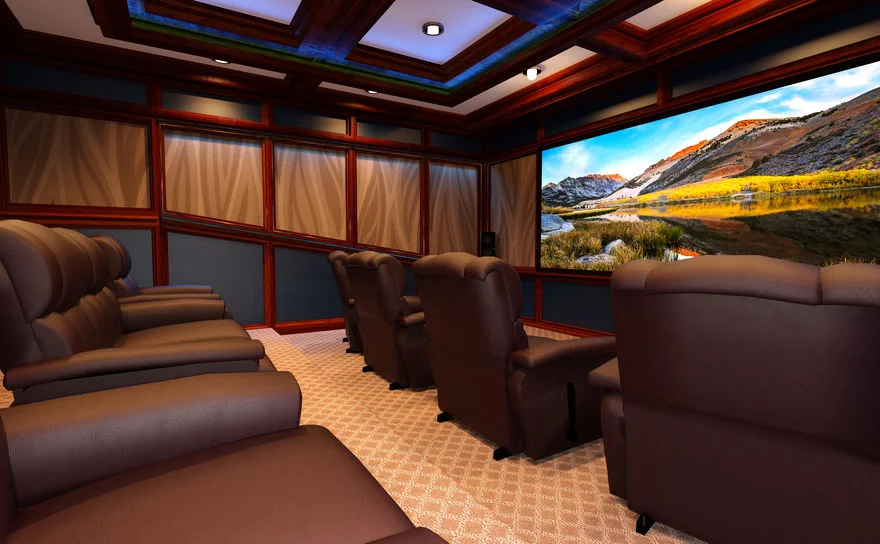
When the lights in the movie theatre dim and cell phones are muted, the movie is about to begin. In the dark, you can hear an occasional cough or the rustle of candy wrappers and smell the aroma of buttered popcorn. The screen begins to reflect light. Welcome to the World of CINEMA, a world of make-believe made from moving images and digital sound.
One might sometimes think that what is the physics behind watching a movie? While a movie character often begins in someone’s imagination, the character’s image on the screen is a real image. Light rays shine onto the movie screen to produce the image we see as a moving picture. But how is such a big, clear, and moving image produced?
Projecting the Best Image
Have you ever made a pinhole camera? If you have, you were projecting an image onto a flat surface. The image was small, dim, and upside down. The projector at the back of the movie theatre is similar, but it is a more complex optical device. It uses a very bright light source and lenses to project a big, bright image onto a screen.
Historically, all movies were recorded on film. The film—a long strip of translucent images—is positioned in the middle of a movie projector. Behind the film is a very bright lamp sitting inside a concave reflector. White light from the lamp is concentrated though two lenses— called a condenser—onto the film. The rays emerging from the condenser pass through the film. The images on the film act like a series of multicolored filters. The filtered light, carrying the image on the film, then passes through a series of lenses that spreads the light out and focuses it onto the movie screen. When the light strikes the screen, the image produced is therefore many times larger than the original tiny picture on the film. The movie screen then reflects the light that forms this image back to your eyes.
There were a lot of processes happens inside a traditional movie projector in order to project a moving image, like they have to follow the light from the lamp through the film and the lens. Until the late 20th century, movies were projected this way. The thousands of images that make up an entire movie were stored on a long piece of film. This film was wound on a reel and run continuously through the movie projector. The film was fed into the projector upside down and reversed left to right. When light rays shining through the film passed through the lenses of the projector, they crossed.
The picture on the screen, therefore, appeared to the audience as right-side up. The projector used sprocket gears that fit into the small holes in the edges of the film to feed 24 of these separate images past the lens each second. A shutter flashed each of these images onto the screen three times. (This means 72 pictures are projected each second. This flash rate is so fast that our eyes do not notice the images flickering on the screen.) When inverted by the projector, it appears on the screen in its correct orientation.
Modernizing Movies
These days, digital video has transformed the movie industry. The 2002 recording of Star Wars: The Attack of the Clones, on digital video, ignited a technological shift. Instead of traditional film, movies can now be recorded digitally onto a computer and stored on a DVD or Blu-ray. This makes the shooting, editing, and distribution of a movie much cheaper. Modern digital media can store information in a way that is less likely to degrade. Every time a traditional film is run through a projector, it may get a bit stretched or dirty. Except for scratches or breakage, a DVD retains its quality over time.
The digital movie is projected using either a micro-mirror projector or a liquid crystal display (LCD) projector. A micro-mirror projector uses millions of microscopic mirrors to form the images that we see on the screen. This technology still uses a very bright lamp, in this case, to shine light through a prism that splits it up into color beams. The beams are reflected off the tiny mirrors, which turn on and off in response to the video signals. An LCD projector also relies on light and mirrors; some things never change! A very bright light is reflected off a mirror that has an LCD on it. In response to the video signal, the crystals let some of the light through and block some of it.
Though these technologies are newer, they retain some of the original ideas from the invention of movies on film. Digital recording still relies on stringing together a series of images called “frames” in rapid succession to create a moving picture. While the moving image is not really continuous, our eyes and visual system interpret these pictures as uninterrupted.
Here we, Lumina Projection Screens provides you with various options of home theatre screens that gives an immersive experience than movie theatres or cinema halls. Now, you need not wait for the time to watch a movie, instead, turn your home into a cinema hall of your desire. Our main aim is to deliver an enhanced and one-of-a-kind cinematic experience of magnificent visuals that enables you to easily enjoy the depth of your content – like your favorite movies, series, and even sports, for every class and group of people.
- Date - June 7, 2019